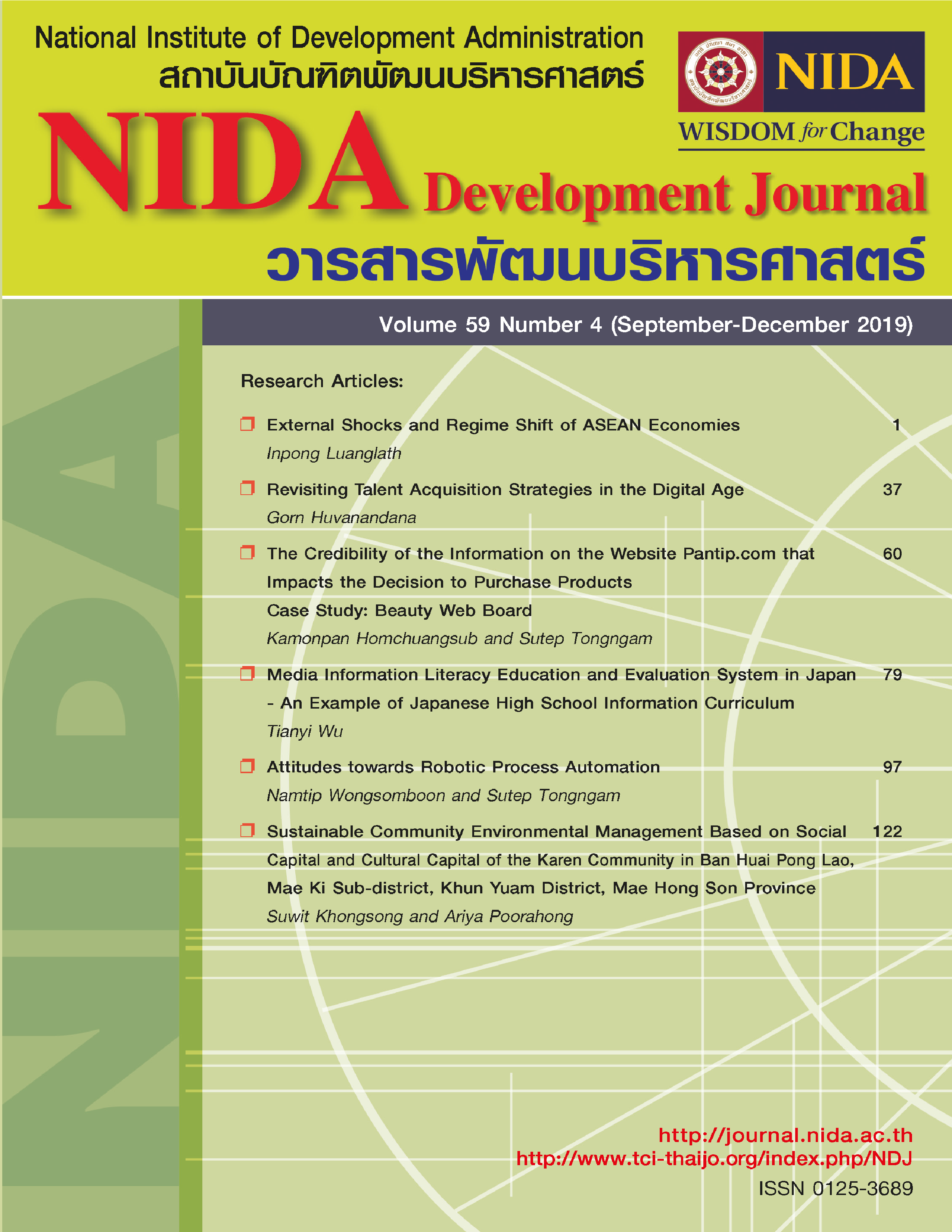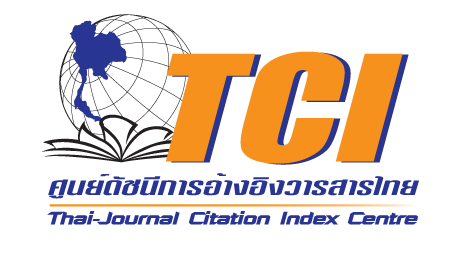Attitudes towards Robotic Process Automation
Keywords:
Attitude, Robotic Process Automation, Competitive Advantage, Self EsteemAbstract
Attitudes towards Robotic Process Automation Objectives: 1.)To study attitudes towards work process automation (RPA) 2.) To study the structural equation model of factors affecting attitudes towards work processes automation 3.) To study the influence of adaptation pathways, self-esteem and operational efficiency on competitive advantage and attitudes towards automated work processes.
The research methodology was survey research using quantitative research method, using descriptive research methodology and using questionnaires as a tool for collecting data. The sample group was Personnel who know how to use automated processes, a total of 300 samples. Test the reliability of the tool. Based on the concept of Cronbach Alpha, the instrument reliability test result was 0.975 and the content conformity index (IOC) test result was 0.938. Statistics in the data analysis using descriptive statistics. Frequency distribution of data with arithmetic mean percentage frequency. Standard deviation, range value, minimum value, maximum value, variance, skew, kurtosis, and coefficient of variance (CV). Inferential statistical analysis was performed using statistical analysis consisting of confirmatory component analysis (CFA) and structural equation analysis. (SEM) Statistical data processing from ready-made computer programs.
Analysis of the structural equation model of attitude towards automated work processes. The model was harmonious with the empirical data (Chi – Square =99.640, df = 91.0, Sig. 0.251 > 0.05, CMIN/df. 1.099 < 2.0, CFI 0.998, GFI 0.966, AGFI 0.929, RMSEA 0.018, NFI 0.980, IFI. 0.998, RMR 0.011) The results showed that the factors influencing the attitude towards automated work processes were the highest in terms of competitive advantage, followed by operational characteristics. self-esteem adjustment and the efficiency of the automated work process, respectively, and the factors that influence the efficiency of the automation of the highest Performance characteristics, followed by self-esteem adjustment and competitive advantages The factors influencing the competitive advantage were highest in terms of performance characteristics, followed by self-esteem. and adaptation In addition, self-esteem influenced performance characteristics. and adaptation Influence on performance characteristics statistically significant.
References
Bollen, K.A. (1989). Structural equations with latent variables. New York: John Wiley & Sons.
Bruno, J., Johnson, S., & Hesley, J. (2017). Robotic Disruption and the New Revenue Cycle: Robotic Process Automation Represents an Immediate New Opportunity for Healthcare Organizations to Perform Repetitive, Ongoing Revenue Cycle Processes More Efficiently and Accurately. Healthcare Financial Management, 71(9), 5561. Retrieved August 12, 2019
Camarero, C., Anton, C., & Rodríguez, J. (2013). Technological and ethical actecedents of e–book piracy and price acceptance. Journal of the Electronic Library, 32(4), p. 542–566.
Chananthon Sornurak and Sirinuj Loykulnan (2020). Evaluation of Competitive Advantage from Application of automation software in commercial banking business : a case study of ABC Bank Operations. national academic conference Management, 12, 732-743.
Chanon Komonmal. (2008). The use of the Rubin's Self Esteem Scale test in practice. Social work: a study of the cases of those receiving protection in protection and occupational development centers. Kredtrakan House (Master's thesis). Thammasat University, Faculty of Social Work.
Diamantopoulos, A. & Siguaw, J.A. (2000). Introduction to LISREL: A guide for the uninitiated. London: SAGE Publications, Inc.
Hair, J. F. J., Anderson, R. E., Tatham, R. L., Black, W. C., (2010). Multivariate Data Analysis (Sixth ed.), Upper Saddle River, New Jersey, Prentice Hall.
Hair, J. F., Black, W. C., Babin, B. J., & Anderson, R. E., (2010). Multivariate data analysis: A global perspectives. Upper Saddle River, NJ: Pearson Education, International.
Jorge, R., Rui, L., Tiago , T., & Sara, P. (2021). Robotic Process Automation and Artificial Intelligence in Industry 4.0 - A Literature review. Procedia Computer Science, 2021: 51:58.
Kasem Chalermthanakijkosol. (2000). Adjustment in the work of employees of mobile phone service companies. Master of Science Thesis. Industrial Psychology. Bangkok:
Nattawut Pongsiri. (2018, August 26). Office Automation System. Thansettakij, 26-27. Retrieved October 10, 2021, from http://www.thansettakij.com/content/308970
Rogers, C. R., & Wood, J. K. (1974). Client-Centered Theory Carl Rogers. In A. Burton (Ed.), Operational Theories of Personality (pp. 211-258)
Singha Chaweesuk and Sunanta Wongchaturapat (2012), Theory of Information Technology Acceptance. Ladkrabang Information Technology Journal, 1(1).
Thanit Sorat. 2006. Knowledge of logistics. Bangkok: Proud Press (2002).
Thongchai Santiwong. (1990). Personnel management. Bangkok: Thai Wattana Panich.
Wilaiporn Taweelappanthong. (2017). Moving forward with automation to cope with the digital labor market. Retrieved August 10, 2021, from https://www.pwc.com/th/en/pwc-thailand-blogs/blog-20171130.html.
Yaowapa Chupraphawan. (2004). Acceptance of new innovations. Bangkok: Odeon Store.
Downloads
Published
How to Cite
Issue
Section
License
Copyright (c) 2024 NIDA Development Journal

This work is licensed under a Creative Commons Attribution-NonCommercial-NoDerivatives 4.0 International License.





